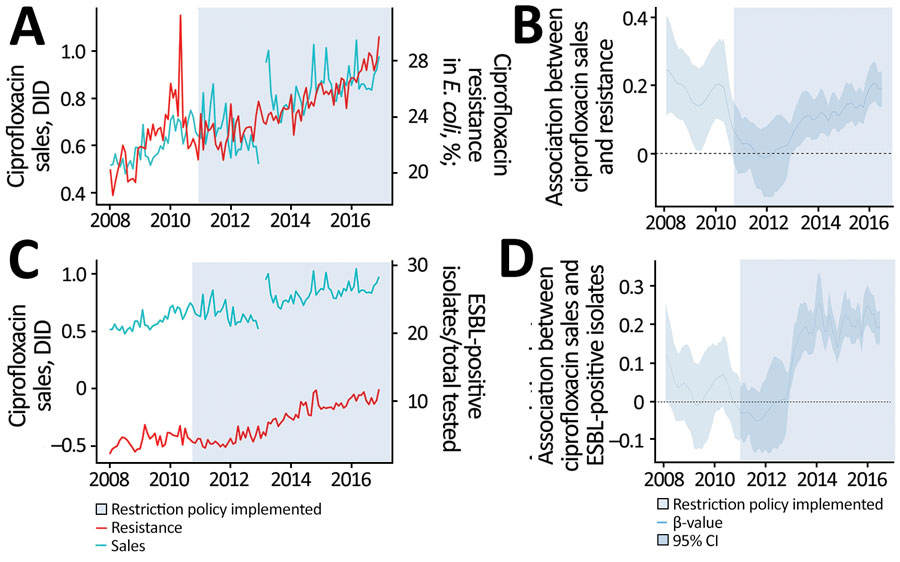Volume 28, Number 1—January 2022
Research
Effect on Antimicrobial Resistance of a Policy Restricting Over-the-Counter Antimicrobial Sales in a Large Metropolitan Area, São Paulo, Brazil
Figure 2

Figure 2. Descriptive analysis of ciprofloxacin sales and Escherichia coli resistance in the São Paulo metropolitan area, Brazil, before and after a national policy restricting over-the-counter antimicrobial sales began. A, B) Ciprofloxacin sales and resistance in E. coli; C, D) Ciprofloxacin sales and proportion of ESBL-positive isolates. Panels C and D show distribution of estimated β-values obtained from dynamic regression model, representing the association between ciprofloxacin sales and resistance for E. coli and proportion of ESBL-positive isolates. A β-value and 95% CrI >0 indicate a direct association between sales and resistance, except for the period between 2011 and 2013. Estimated β values >0 before and after the policy began indicate no influence of the regulation on ciprofloxacin resistance. Light blue shaded areas represent period after the restriction policy began. CrI, credible interval; DID, defined daily dose/1,000 inhabitant-days; ESBL, extended spectrum β-lactamases.